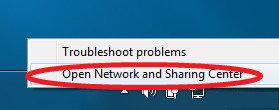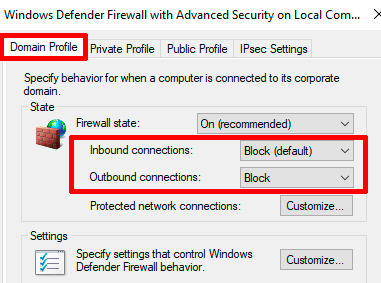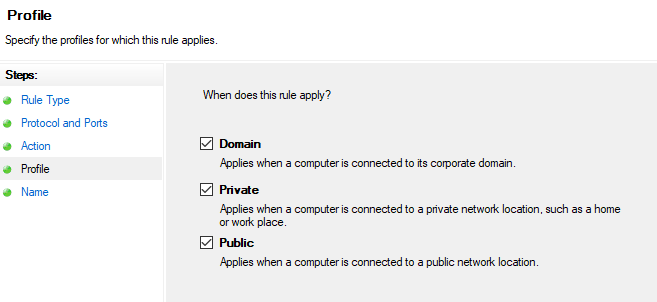Kill switch for Windows 7 and Windows 10
Windows 7
- Click on the network icon in your task bar > Open Network and Sharing Center
- Your default connections will appear. If it is set to “public” change this to private
- Click on “Public Network” underneath the network
- Click on Home Network to make it private
Windows 10
- Right click on the network icon > Open Network and Internet Settings
- Click on Change connection properties
- Click on Private
- Open up Advanced Firewall settings. You can search for this in the start menu
- Backup your current firewall settings. Click on Action > Export Policies. Pick a location and save the file
- Action > Restore Default Policy > Yes
- Click on Windows Defender/Firewall Properties
- Under Domain Profile, set Inbound and Outbound to Block (like below)
- Click on the Private tab, and set Inbound and Outbound to Block (like below)
- Click on Outbound rules > New Rule > Program > Next
- Click on browse then browse over to the following path C:\Program Files\CeloVPN\ and select celovpn.exe
- Click Allow the connection > Next
- Uncheck Domain and Private > Next
- Give the rule a name then Finish
- Click on Outbound rules > New Rule > Port
- Select UDP and enter in 53
- Select All profiles > Next
- Give the rule a name > Finish

















